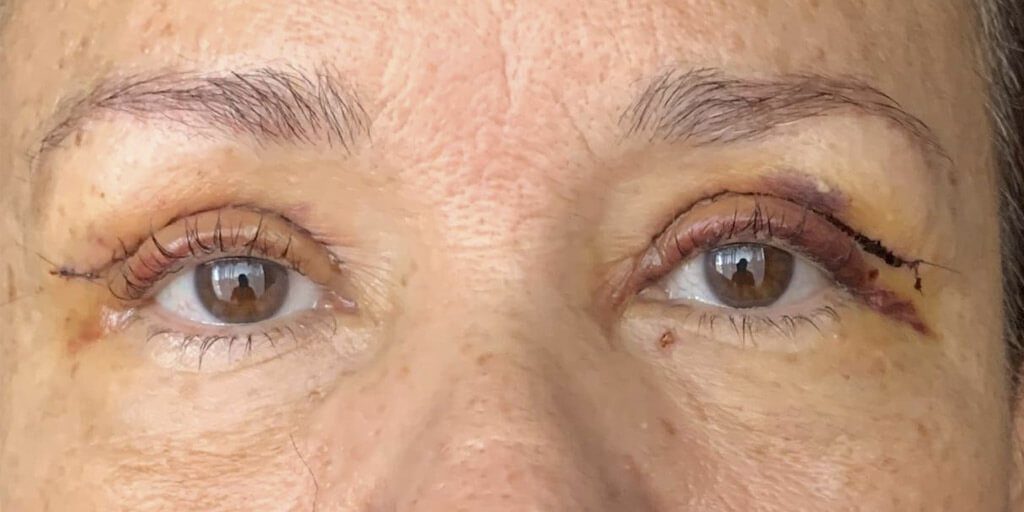Upper eyelid surgery, also known as blepharoplasty, is one of the most popular facial plastic surgeries. It is usually done as an outpatient operation under local anesthesia, although some individuals may prefer to undergo mild sedation. A common question regarding upper eyelid surgery is how much bruising and swelling can be expected and for how long. Additionally, patients want to know if they will experience pain during recovery.
Bruising after upper eyelid surgery is generally mild. It is worse on day two after the operation and may take up to a week to disappear (see image). Bruising is highly variable and depends on the patient’s health, skin color, and if he or she takes blood thinners. Patients must stop any medication or vitamin supplement that can affect coagulation one week before the operation. Doing so will decrease the amount of bruising and help it to disappear sooner.
Patients should also expect some swelling after an upper eyelid blepharoplasty. Swelling tends to be more pronounced on the outer aspect of the eyelids, near the tail of the brow. The best way to decrease swelling after eyelid surgery is to apply cold compresses on the operated site for the first 24 hours. Compresses need to be used carefully for 10 minutes of every hour, avoiding traction on the surgical incision.
Finally, pain is generally mild or non-existent after an upper eyelid blepharoplasty. In fact, most patients abstain from taking pain medication because they do not feel pain. Mild discomfort is normal for about 48 hours.
Mild swelling and bruising on day two after an upper eyelid blepharoplasty.












 |
|